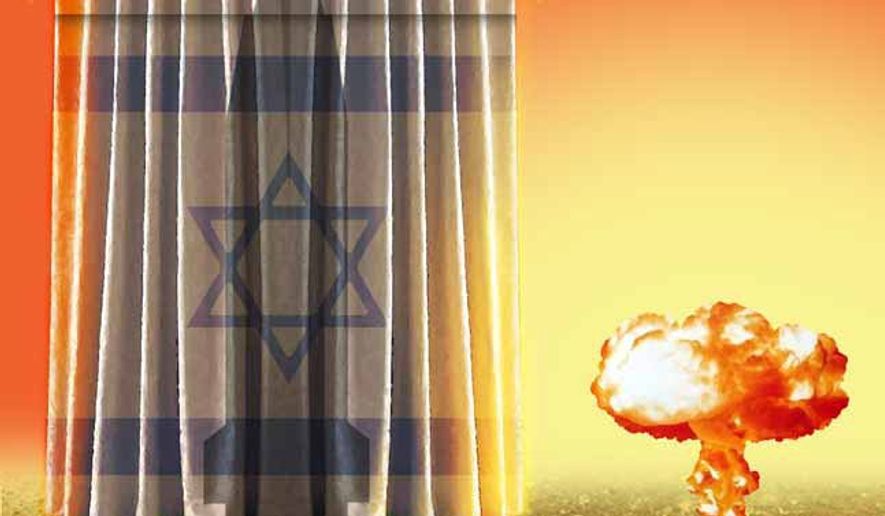OPINION:
The first post-World War II employment of nuclear weapons will probably be launched by North Korea or Pakistan. Should circumstances actually turn out this way, the resultant harms would impact not only the aggressor state and its victims, but also selected strategic nuclear policies in certain other states. The most significant example of such an impact would likely be Israel.
Israel’s nuclear strategy remains “deliberately ambiguous.” This “opaque” posture has endured because Jerusalem has never yet had to worry about confronting enemy nuclear forces. This durability would almost certainly need to change, however, if Iran — the July 2015 Vienna pact notwithstanding — were sometime perceived to have already become “nearly-nuclear.”
But it’s not just Iran. Israel could also decide to shift toward some plausible measure of nuclear disclosure once an actual nuclear attack had taken place literally anywhere on earth. There would then need to be no direct connection between such an attack and Israel for the Jewish State to acknowledge certain new obligations to promptly modify its core nuclear strategy.
Plainly, once North Korea and/or Pakistan had fired nuclear weapons against another state or configuration of states, a principal nuclear “taboo” will have been broken. The precise manner and extent to which Israel would then be impacted in such circumstances would depend on, among other things, prevailing geopolitical alignments and cleavages, both regional and worldwide. For example, North Korea has already displayed tangible ties to both Syria and Iran, and all concerned parties could assuredly be forced to take into account the presumed expectations of a “Cold War II.”
The “spillover” impact on Israel of any actual nuclear weapons use by North Korea or Pakistan would also depend upon the particular combatants involved, expected rationality or irrationality of these same combatants, yields and range of the nuclear weapons fired, and the prompt aggregate calculation of civilian and military harms actually suffered in the affected areas. If North Korea had fired its nuclear weapons against American targets, military or civilian, Israel could correctly anticipate an overwhelmingly destructive U.S. response. If, in another apt scenario, a government in Islamabad (possibly a post-coup Islamist regime) fired “only” its tactical or theater nuclear weapons, and “only” against exclusively military targets, the Indian response might then be substantially less overwhelming.
It also ought to be noted here, for further predictive clarification, that Pakistan recently shifted certain specific portions of its nuclear targeting doctrine to expressly lower-yield, shorter-range weapons, presumably to enhance the underlying credibility of its nuclear deterrence posture vis-a-vis India.
All of this would pose stunningly complex calculations for Israeli strategists. Indeed, these planners would have to account capably not only for singular nuclear weapons operations by North Korea and/or Pakistan, but also for any multiple interactions or synergies that might be involved. It is even conceivable, to offer still another meaningful example, that any North Korean resort to nuclear attack would be followed, more or less promptly, by a separate Pakistani use of nuclear weapons.
This prospect could represent a chaotic or near-chaotic development, one in which Israel would then be faced with an unprecedented analytic challenge.
Where should Israeli strategic planners now go with such bewildering insights and expectations? Soon, they will need to factor into nuclear policy calculations an updated or refined version of Carl von Clausewitz’s concept of “friction,” and his closely related emphases on the “fog of war.” In this nuanced version, they will need to base suitably enhanced preparations for Israeli nuclear posture changes upon a much more widely integrated geographic area of global strategic interaction, and on a correspondingly wider range of worldwide military developments.
These developments will need to include conflicts and operations that could arise outside of the Middle East, especially North Korea and Pakistan. Ultimately, this is because of the irremediably systemic nature of all world politics.
Because of the “friction” created by possible nuclear weapons use outside the region, Israel could have to move beyond “deliberate nuclear ambiguity” sooner or more suddenly than may originally have been planned in Jerusalem. Of course, any such unanticipated shift would also have immediately urgent implications for Israel’s strategic nuclear deployments, its nuclear targeting doctrine, its elaborate cyberdefenses and its multifaceted ballistic missile defenses. Looking ahead, this means that Israel’s nuclear strategy must be shaped not only by assorted scenarios of direct attack upon the Jewish State, but also by certain nuclear developments that lie outside of its most immediate and narrowly geographic area of military operation.
• Louis Rene Beres is the author of “Surviving Amid Chaos: Israel’s Nuclear Strategy” (Rowman & Littlefield Publishers, 2016).




Please read our comment policy before commenting.